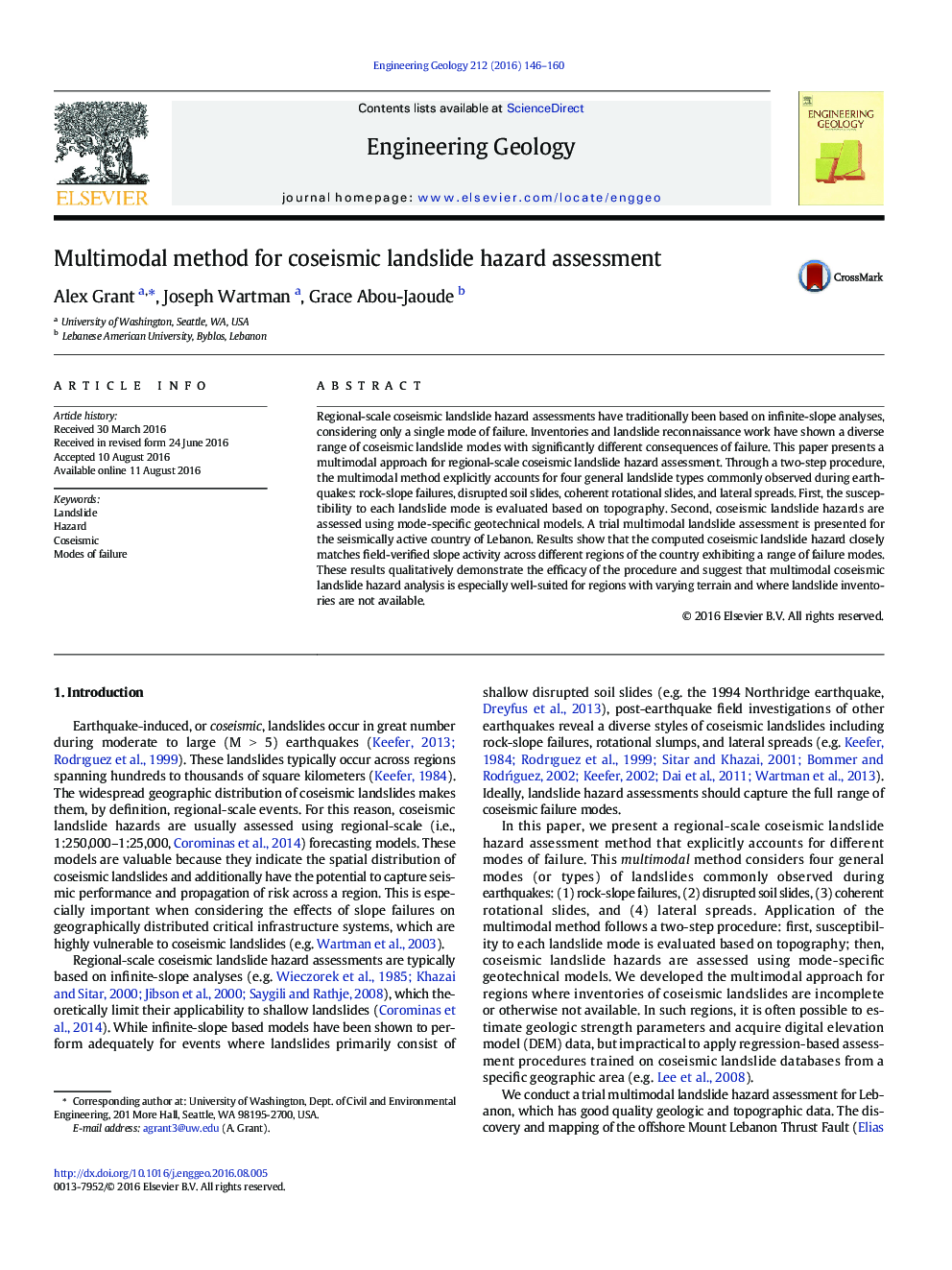| Article ID | Journal | Published Year | Pages | File Type |
|---|---|---|---|---|
| 4743064 | Engineering Geology | 2016 | 15 Pages |
•Coseismic landsliding hazard assessed as composite of discrete modes of failure•Method applicable over regional scales without requiring landslide inventory•Model was verified in the field for 30 sites in Lebanon.•Predicted modes of landsliding and activity closely matched reality.
Regional-scale coseismic landslide hazard assessments have traditionally been based on infinite-slope analyses, considering only a single mode of failure. Inventories and landslide reconnaissance work have shown a diverse range of coseismic landslide modes with significantly different consequences of failure. This paper presents a multimodal approach for regional-scale coseismic landslide hazard assessment. Through a two-step procedure, the multimodal method explicitly accounts for four general landslide types commonly observed during earthquakes: rock-slope failures, disrupted soil slides, coherent rotational slides, and lateral spreads. First, the susceptibility to each landslide mode is evaluated based on topography. Second, coseismic landslide hazards are assessed using mode-specific geotechnical models. A trial multimodal landslide assessment is presented for the seismically active country of Lebanon. Results show that the computed coseismic landslide hazard closely matches field-verified slope activity across different regions of the country exhibiting a range of failure modes. These results qualitatively demonstrate the efficacy of the procedure and suggest that multimodal coseismic landslide hazard analysis is especially well-suited for regions with varying terrain and where landslide inventories are not available.
